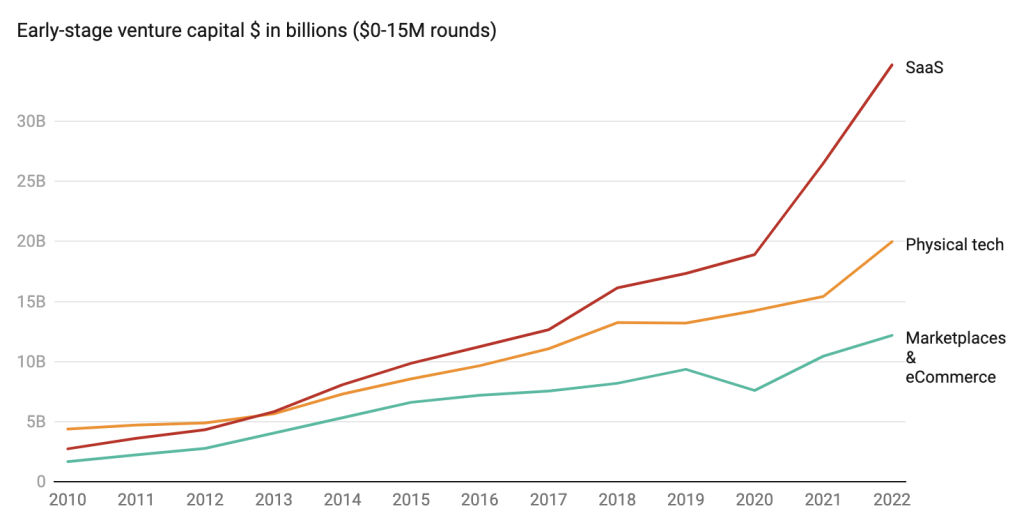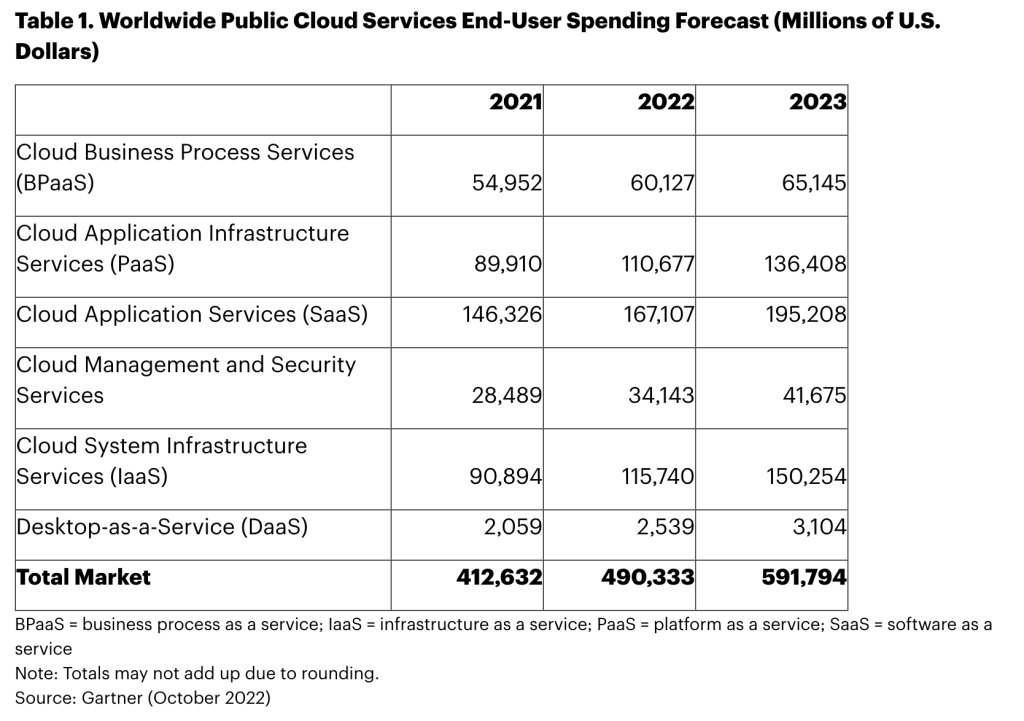Over the last few decades, Software-as-a-Service (SaaS) has had a profound and transformative impact on modern business, particularly in the software industry. Taking advantage of available SaaS options, and forming strong B2B SaaS partnerships can be a major determining factor in whether a company is a success or a failure.
In this article, we will delve into the definition and inner workings of SaaS, explore the factors that have contributed to its widespread popularity, and take a deep dive into the intricate world of B2B SaaS partnerships. Over the past several years, it has become an undeniable fact that businesses can unlock immense opportunities and foster growth by strategically leveraging these partnerships.
Understanding SaaS
Software-as-a-Service (SaaS) has revolutionized the software industry by offering a cloud-based delivery model that enables users to access applications over the Internet, eliminating the need for local installations. This approach provides businesses with numerous advantages. Firstly, it offers remarkable cost-effectiveness as it eliminates the need for significant upfront investments in hardware, infrastructure, and software licenses. Instead, organizations can subscribe to a SaaS provider and pay for services on a flexible subscription basis, aligning costs with actual usage.
Scalability is another pivotal benefit of SaaS. Businesses can easily scale their usage up or down, depending on demand, without being constrained by traditional software limitations. This adaptability allows companies to respond swiftly to market dynamics, seize opportunities, and drive innovation.
Moreover, SaaS enhances accessibility and convenience. Users can access applications from any location with an internet connection, enabling remote work and collaboration. SaaS providers take on the responsibility of software updates, maintenance, and security, freeing businesses from these operational burdens and allowing them to focus on their core competencies.
The Popularity of SaaS

(source: Dealroom)
As of 2022, SaaS accounts for around 70% of overall enterprise software utilization, and this figure could rise to 85% by 2025.
The popularity of SaaS stems from its ability to address the evolving needs and challenges of businesses in today’s fast-paced digital area. One key factor driving its adoption is the cost-effectiveness it offers. Unlike traditional software models that require significant upfront investments, SaaS operates on a subscription-based model, enabling businesses to allocate resources more efficiently and reduce capital expenditure. This allows organizations to redirect funds toward other critical areas, such as research and development, talent acquisition, and marketing.
Scalability is another compelling aspect that has contributed to the popularity of SaaS. Businesses can easily scale their software usage based on demand, whether it is expanding operations, accommodating seasonal fluctuations, or responding to rapid growth. SaaS provides the necessary infrastructure and resources to support organizations in their growth trajectories, ensuring they can adapt and thrive in dynamic markets.
Furthermore, the accessibility and convenience of SaaS have made it an attractive option for businesses. Users can access applications anytime, anywhere, as long as they have an internet connection. This flexibility fosters collaboration, facilitates remote work, and enables seamless integration with other digital tools. Additionally, SaaS providers handle software updates, maintenance, and security, alleviating businesses from these responsibilities and allowing them to focus on core business activities.
The Functioning of SaaS
To comprehend the true potential of B2B SaaS partnerships, it is essential to understand how SaaS operates. SaaS providers develop and host software applications on their servers, which users can access through secure login credentials. This centralized approach eliminates the need for organizations to handle software installations, maintenance, and infrastructure management, significantly reducing operational complexities.
Leveraging B2B SaaS Partnerships
B2B SaaS partnerships offer businesses a strategic avenue to enhance their capabilities, expand their user base, and optimize their operations. Let us explore two key types of partnerships: mutual user partnerships and service receiver/service provider partnerships.
Mutual User Partnerships
Mutual user partnerships involve collaboration between two companies with a similar client base, aiming to provide complementary products and services to enhance the value proposition for their shared user base. By joining forces, businesses can increase brand awareness, tap into new markets, and deliver a more comprehensive solution to their customers.
The process of selecting a suitable mutual user partner begins with gaining a comprehensive understanding of your own user base. This involves analyzing demographics, preferences, and pain points. By identifying the needs that your company already fulfills directly, you can narrow down the areas where your users may require additional services or products.
Next, explore companies that specialize in filling those specific needs. Look for organizations whose products or services complement your own without direct competition. This strategic alignment ensures the partnership is mutually beneficial, allowing both parties to leverage their unique strengths and provide a holistic solution to the target audience.
Collaborating with a mutual user partner brings several advantages. It expands your brand reach, exposes your product to a broader customer base, and opens up cross-promotional opportunities. Furthermore, the partnership enables you to tap into your partner’s expertise and resources, allowing for shared knowledge, innovation, and improved customer satisfaction. Together, you can provide an all-encompassing solution that addresses the comprehensive needs of your shared user base.
Service Receiver/Service Provider Partnerships
Service receiver/service provider partnerships involve one SaaS partner providing specific services directly to another partner, receiving compensation for their expertise. These partnerships allow businesses to outsource areas where they lack efficiency or expertise, enabling them to focus on their core competencies while accessing specialized services.
To identify an appropriate service provider partner, organizations must conduct a comprehensive evaluation of their core strengths and assess the additional services required to deliver their offerings effectively. This introspection ensures a clear understanding of the specific areas where external expertise is needed.
For instance, let’s consider a software development company providing a SaaS tool for client management. To ensure the platform’s security and legitimacy, an account verification system is essential. However, developing an in-house SMS application for one-time passwords would be a time-consuming and resource-intensive endeavor. In such a scenario, it is prudent to seek a partnership with a specialized service provider that excels in SMS verification. By integrating its systems via APIs, the software development company can save time, resources, and costs while focusing on its core competency of developing cutting-edge software.
Service receiver/service provider partnerships offer multiple benefits. They enable businesses to access specialized services without the need for extensive investments in developing those capabilities in-house. This approach saves time and resources, enhances operational efficiency, and ensures access to best-in-class services. Additionally, partnering with established service providers can boost credibility and trust, as organizations leverage the expertise and reputation of their partners.
Conclusion
In conclusion, B2B SaaS partnerships provide businesses with a powerful framework to unlock growth opportunities, optimize operations, and deliver exceptional value to customers. SaaS’s cost-effectiveness, scalability, and accessibility have contributed to its widespread popularity among organizations seeking innovative and efficient software solutions. By strategically embracing mutual user partnerships and service receiver/service provider collaborations, businesses can tap into the expertise, resources, and customer bases of their partners.
As we navigate the ever-evolving landscape of technology and business, B2B SaaS partnerships, with their potential to drive innovation, foster growth, and enhance competitiveness, will undoubtedly play a crucial role in shaping the success of enterprises across diverse industries.
Let us embrace the transformative power of SaaS and seize the opportunities it presents to create a prosperous future for businesses worldwide. We can build a resilient and thriving economy fueled by strategic partnerships and technological innovation.


